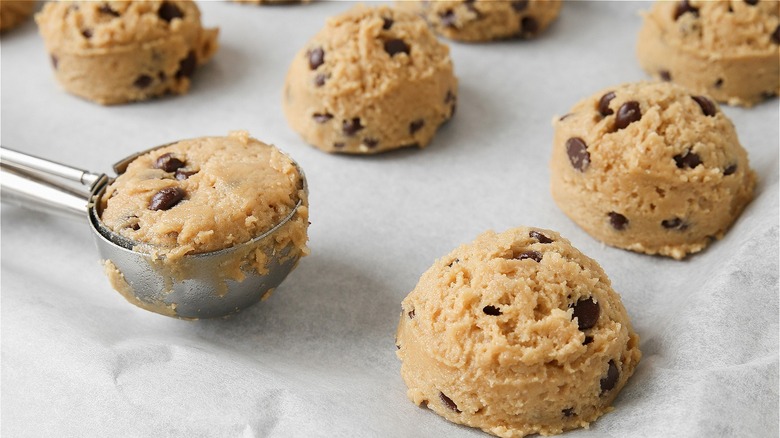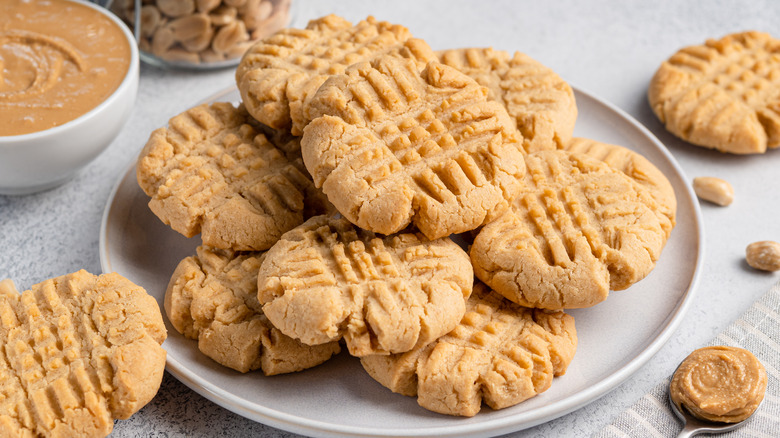The Type Of Cookie Dough You Shouldn't Smash
Making cookies isn't as easy as it sounds. There are a lot of common mistakes even experienced home bakers repeatedly make. These can range from using butter that is still too cold to forgetting to rotate the cookie sheet while baking. Nestled in the middle is flattening. To smash or not to smash? That is the question. And as you probably expected, the answer varies from recipe to recipe.
There is a lot of science involved in baking. The recipes are precision balanced to produce specific results. While many cookie recipes contain a precise flour-to-fat ratio, so they spread naturally when cooking, others do not. These cookies require you to flatten them a little before baking. The simple rule of thumb to remember whether to smash or not is to read the recipe. If it does not specifically direct you to flatten the cookie dough before baking, do not smash them.
Other reasons not to smash your cookie dough
To assist in spreading is not the only reason why cookies are smashed before baking. Sometimes, the reasons are aesthetic. In other words, you smash a cookie to imprint a design that gets baked in during the cooking. This way, you not only have a treat that tastes great, but it also looks great too.
Although there are tools, such as cookie stamps, that give your cookies a specific design, you can get creative and use just about anything for this, as long as it's clean and sanitary. Some common tools are a fork, the bottom of a fancy glass, or even a meat tenderizer.
For any imprinting tool to work, your cookie has to be able to accept a design. Cookies with add-ins should not be smashed for an imprint because the nuts or chocolate chips will mar the design. Also, if the dough is not sufficiently malleable, the design will lose detail. And any cookie that rises significantly during baking will not hold an imprint well either.

